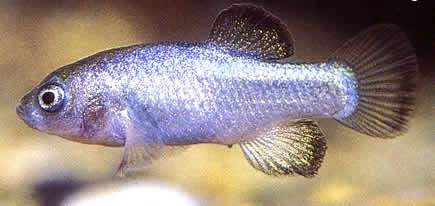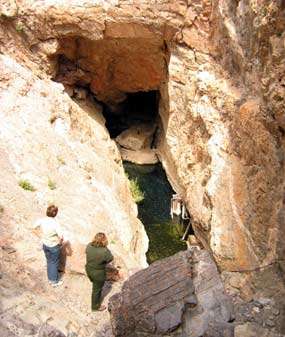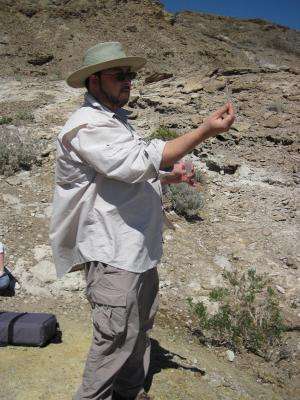Microbiologist at the Desert Research Institute makes his mark in Death Valley

Dr. Duane Moser, Environmental Microbiologist at the Desert Research Institute, has a penchant for studying life in its most peculiar form. "I've been fascinated with the unique ecosystems of Death Valley for as long as I can remember," Moser said.
Moser and his team have spent the past six years studying the home of a rare pupfish that exists in Devils Hole; part of Death Valley National Park located in the Ash Meadows National Wildlife Refuge along the Nevada/California state line. The location is the only place in the world where this small and rare fish exist. The species is considered by many scientists as the most geographically-restricted vertebrate on the planet. The pupfish have been on the U.S. Endangered Species List since 1967 and researchers believe the species is somewhere between 10,000 to 20,000 years old.
Specifically, Moser has been exploring micro-organisms from deep aquifers of the Southern Great Basin and examining how biological support structures, such as nutrients, water flow, and algae (food for pupfish) sustain in this isolated ecosystem. "There is something out of balance in their ecosystem or within their very gene pool," Moser said. "We don't know what it is or what to do about it."
It's a problem Moser says might best be solved experimentally. Recently, the Fish Conservation Facility was built, which houses a lab and a refuge that mimics the real Devils Hole. Moser, along with a group of concerned stakeholders are working together to design experiments to explore the intimate details of how Devils Hole works.

"Among the range of possibilities, we suspect that a shift in limiting nutrient chemistry in Devils Hole may have shifted algae and microbial populations," Moser said. "In turn, this may be starving the fish at some critical stage of its lifecycle."
As it stands, there are somewhere between 40 and 30 pupfish left. This is a concern for Moser as one of his research objectives at the Devils Hole is to help find a solution to the possibility of the pupfish becoming extinct. His efforts recently awarded him the 2013 Devils Hole Pupfish recognition in May. This recognition is part of the annual Devil's Hole workshop that's been taking place at Death Valley National Park for nearly 20 years.
"Who would have imagined that someday the work of my team would inform efforts to preserve the pupfish?" Moser said. "This award is a validation that our work has begun to make a difference."
More than 100 participants from various government agencies and private citizens attended the annual workshop. Some of the attendees included representatives from Death Valley National Park, the National Nuclear Security Administration, the U.S. Geological Survey, and the Los Alamos National Laboratory to name a few.

"Knowing what to do to help a species like the Devils Hole pupfish is particularly difficult," Moser said. "You can't take chances when every outcome must be a success. We need to understand what the bottleneck is that limits recruitment of pupfish in Devils Hole and try to establish what has changed to cause this bottleneck."
One sign of hope is that a strain of Devils Hole/Amargosa hybrid pupfish do exist and can be used to learn more about food requirements, lifecycle and other factors that will assist in the survival of the wild fish. These fish are currently being used for university research, including colleagues such as Frank van Breukelen and Stan Hillyard at the University of Nevada, Las Vegas. The goal is aimed at understanding the physiology of these unusual fish.
Moser says all he and his lab can do is continue in search of a modern-day solution to prevent the loss of an ancient fish. "Extinction is forever. As long as there are a few fish left, there is hope."
Provided by Desert Research Institute



















